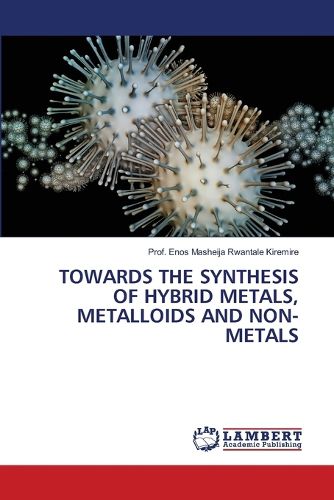Readings Newsletter
Become a Readings Member to make your shopping experience even easier.
Sign in or sign up for free!
You’re not far away from qualifying for FREE standard shipping within Australia
You’ve qualified for FREE standard shipping within Australia
The cart is loading…






In previous studies of chemical clusters, the focus centered on analyzing and categorising clusters containing skeletal elements coated with ligands. This book focuses mainly on chemical clusters of skeletal elements without ligands. The categorization of selected elements of the groups 1 to 18 without ligands revealed a major distinction of metallic elements and non-metallic elements. It also revealed that the non-metallic elements can also be sub-divided into two distinct groups: metalloids and non-metals. On the whole, metals can be found in quadrants labeled Q1, while the metalloids are found in quadrants labeled Q2, and non-metals in quadrants labeled Q3. There are no clusters found in quadrant Q4 where K*=D-ZC-Y. In this book, a wide range of mixed clusters involving metals and metalloids with non metals were analysed and categorised. In principle, this implies that new synthetic materials involving pure mixed metals, non metals and metalloids can be synthesized. This means that in principle we can hypothetically increase the range of existing numbers of metals, metalloids and non-metals known to date.
$9.00 standard shipping within Australia
FREE standard shipping within Australia for orders over $100.00
Express & International shipping calculated at checkout
In previous studies of chemical clusters, the focus centered on analyzing and categorising clusters containing skeletal elements coated with ligands. This book focuses mainly on chemical clusters of skeletal elements without ligands. The categorization of selected elements of the groups 1 to 18 without ligands revealed a major distinction of metallic elements and non-metallic elements. It also revealed that the non-metallic elements can also be sub-divided into two distinct groups: metalloids and non-metals. On the whole, metals can be found in quadrants labeled Q1, while the metalloids are found in quadrants labeled Q2, and non-metals in quadrants labeled Q3. There are no clusters found in quadrant Q4 where K*=D-ZC-Y. In this book, a wide range of mixed clusters involving metals and metalloids with non metals were analysed and categorised. In principle, this implies that new synthetic materials involving pure mixed metals, non metals and metalloids can be synthesized. This means that in principle we can hypothetically increase the range of existing numbers of metals, metalloids and non-metals known to date.